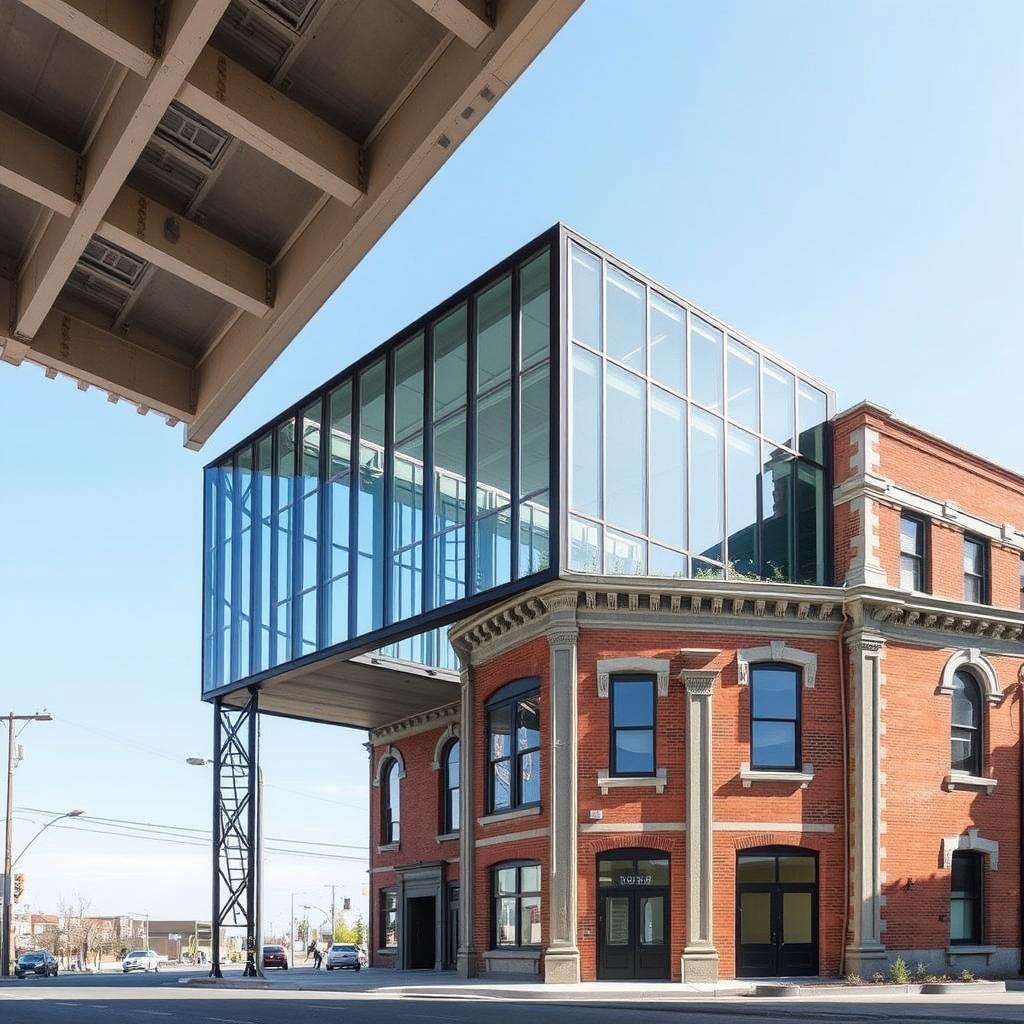
Adaptive Reuse Architecture: Breathing New Life into Old Spaces
In a world where sustainability and resource conservation are becoming increasingly important, adaptive reuse architecture is gaining momentum as a creative, eco-friendly solution for revitalizing cities and preserving architectural heritage. Adaptive reuse is the process of repurposing old buildings for new uses while maintaining their historical significance. By transforming outdated or abandoned structures, architects are not only reducing waste but also creating vibrant spaces that retain a sense of history and character.
What is Adaptive Reuse Architecture?
Adaptive reuse involves taking an existing building—often one that is no longer functional or has fallen into disrepair—and adapting it for a new purpose. It might be an old factory converted into apartments, a warehouse repurposed as a trendy restaurant, or a church transformed into a community center. The goal is to preserve the essential structure while giving it new life, reducing the need for demolition and the environmental impact of new construction.
Unlike a complete renovation, which often strips away much of a building's original charm, adaptive reuse emphasizes maintaining key architectural elements. This creates spaces that blend the past with the present, offering a unique combination of old-world character and modern functionality.
Why is Adaptive Reuse Important?
-
Sustainability One of the biggest drivers of adaptive reuse architecture is its environmental benefits. The construction industry is a significant contributor to carbon emissions and waste. By repurposing existing buildings, architects can significantly reduce the need for new materials and energy that come with new construction. Preserving an old building’s structure also avoids the carbon emissions associated with demolition and waste removal.
-
Preserving Architectural Heritage Older buildings often hold historical, cultural, or architectural significance. Adaptive reuse allows cities to retain their character and heritage by preserving these structures. Instead of tearing down a piece of history, adaptive reuse celebrates it, weaving the building's past into its new future.
-
Economic Benefits Repurposing existing structures can also be more cost-effective than building from scratch. In many cases, the existing building’s framework can be used to save money on construction materials and labor. Adaptive reuse projects can also breathe new economic life into neglected areas, turning derelict buildings into hubs of activity, and attracting tourism, business, and community engagement.
-
Community Revitalization Adaptive reuse often plays a critical role in revitalizing communities. By reactivating abandoned or underutilized spaces, these projects can reduce urban blight, attract businesses, and create spaces for people to gather and interact. This can lead to the overall improvement of neighborhoods, fostering economic growth and social cohesion.
Examples of Adaptive Reuse Architecture
Around the world, adaptive reuse projects are transforming old buildings into exciting new spaces. Here are a few notable examples:
-
The Tate Modern in London, UK: One of the most famous examples of adaptive reuse, this world-renowned art gallery was once the Bankside Power Station. By converting the industrial building into a modern museum space, architects Herzog & de Meuron preserved its industrial grandeur while creating a cultural landmark that draws millions of visitors each year.
-
The High Line in New York City, USA: What was once an abandoned elevated railway track is now a 1.45-mile-long linear park running through the heart of Manhattan. By repurposing the railway as a public space filled with greenery, art installations, and seating areas, the High Line has become a model for urban renewal and adaptive reuse.
-
Zeitz MOCAA in Cape Town, South Africa: This contemporary art museum was carved out of a 1920s grain silo, transforming the former industrial building into Africa’s largest museum of contemporary art. The design preserved the silo’s iconic form while creating a dramatic interior, featuring cathedral-like spaces that showcase the art.
Key Considerations in Adaptive Reuse Projects
-
Structural Integrity Before repurposing an old building, architects must assess its structural integrity. Some buildings may require extensive repairs or reinforcements to ensure they are safe for modern use. This could involve upgrading the foundation, roof, or load-bearing walls.
-
Maintaining Historical Elements A key challenge in adaptive reuse is balancing the need for modern functionality with the desire to preserve historical elements. Architects often have to make careful decisions about which parts of the building to keep and which to modify, ensuring that the building’s new purpose doesn’t erase its historical identity.
-
Sustainability Upgrades While adaptive reuse is inherently more sustainable than new construction, it often requires upgrades to meet modern environmental standards. This might include installing energy-efficient systems, upgrading insulation, and improving water management. These improvements make the building more sustainable while preserving its architectural integrity.
-
Zoning and Regulations Repurposing old buildings can sometimes involve navigating complex zoning laws and building codes, especially when the original building wasn’t designed for its new use. For example, converting an old church into residential apartments might require significant changes to comply with local housing regulations or fire safety codes.
The Future of Adaptive Reuse Architecture
As cities around the world continue to grow, the demand for sustainable and innovative building solutions will only increase. Adaptive reuse offers a promising path forward, allowing architects to transform the urban landscape in a way that honours the past while addressing modern needs. With increasing awareness of environmental issues and the importance of preserving cultural heritage, adaptive reuse is set to play a key role in the future of architecture and urban planning.
Conclusion
Adaptive reuse architecture is more than just a trend it’s a sustainable and meaningful way to reshape our cities. By repurposing old buildings, architects can reduce environmental impact, preserve historical significance, and create vibrant, multifunctional spaces that serve modern communities. As the push for sustainability continues, adaptive reuse will remain a vital tool in the effort to build a greener, more connected world while celebrating the rich architectural heritage of the past.